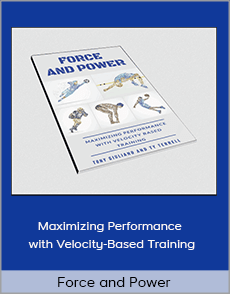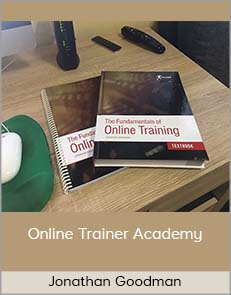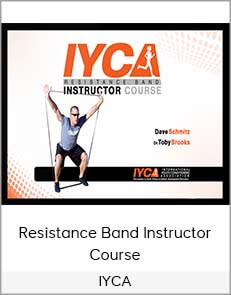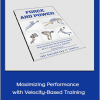Force and Power – Maximizing Performance with Velocity-Based Training
$10.00$19.99 (-50%)
You see, most athletics are dependent on time. A powerlifter has infinite time to complete a lift, sure, but if a lineman reacts too slowly, he’s getting trampled.
Force and Power – Maximizing Performance with Velocity-Based Training
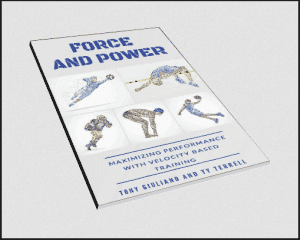
Check it out: Force and Power – Maximizing Performance with Velocity-Based Training
elocity-Based Training (VBT) is a hot topic in the strength and conditioning industry. Over the last few years, there’s been a surge of VBT research and various ways to implement it, but nothing concrete enough to satisfy us.
So we started experimenting.
The Two Questions
As we dove into this project, we were looking for ways to optimize force production in our athletes.
Why?
You see, as we were working through our system, we had an epiphany…
Strength does not move us. Force does.
Faster athletes produce more force in less time.
After months of research, the two main questions that stuck around were:
- How much force can I produce?
- And how quickly can I produce it?
You see, most athletics are dependent on time. A powerlifter has infinite time to complete a lift, sure, but if a lineman reacts too slowly, he’s getting trampled. Football coaches everywhere have stories about a strong kid on the line who is constantly getting beat. What can you do to help this kid?
Answer: pay attention to the velocity at which he moves.
The problem, though, is that this opposes decades of traditional strength and conditioning.
- They just need to get stronger!
- Put more weight on the bar!
- We’re not building sissies here!
Does any of that sound familiar?
Coaches all over the world focus on strength — and it works for some athletes — but what about those who don’t benefit from getting stronger?
Strength is Overrated
That’s right, strength is overrated.
Remember: the goal of training is not to get stronger. Performance is the goal of training.
We need a new model to train athletes. One which accepts that making an athlete “stronger” is sometimes the wrong choice.
This model has never existed… until now.
So what do I do?
We love actionable steps, but when we initially bought some velocity-tracking technology, we didn’t have much to go on.
So we dove into the research.
Side note: Have you ever clicked on an interesting YouTube video — maybe a short lecture, maybe a stand up comedy routine — and then find yourself in parts of the internet you wish you could forget?
We had six months like that, but with scholarly research articles.

At the time, all this work was necessary. But after going through all of these papers, we knew we could simplify things. We didn’t want our peers to go through the same torture.
So we decided to make a manual.
Steal Our System!
Velocity-based training is reshaping our industry. How can you find a system that tells you exactly what data to gather, how to interpret that data, and what changes to make to your athletes’ programs?
Well, you could go through the research out there. If you want to do all the reading and months of work that we did, don’t let us stop you. That would be a good place to start.
But if you have a job, family, or just other stuff you’d rather do with your time, this manual is here to help.
There are other products out there, but none are quite like this one.
Here are some questions we answer in the manual:
- Should I focus on weight lifted? Or force output? What if I don’t have a force plate?
- Which athletes will benefit the most from accomodating resistance (i.e. bands, chains)?
- How is a strong athlete different from a quick athlete? Does it matter? (Spoiler: yes it does)
- How can I maximize the stretch shortening cycle to produce more force in less time?
Here’s the full outline of the book.


